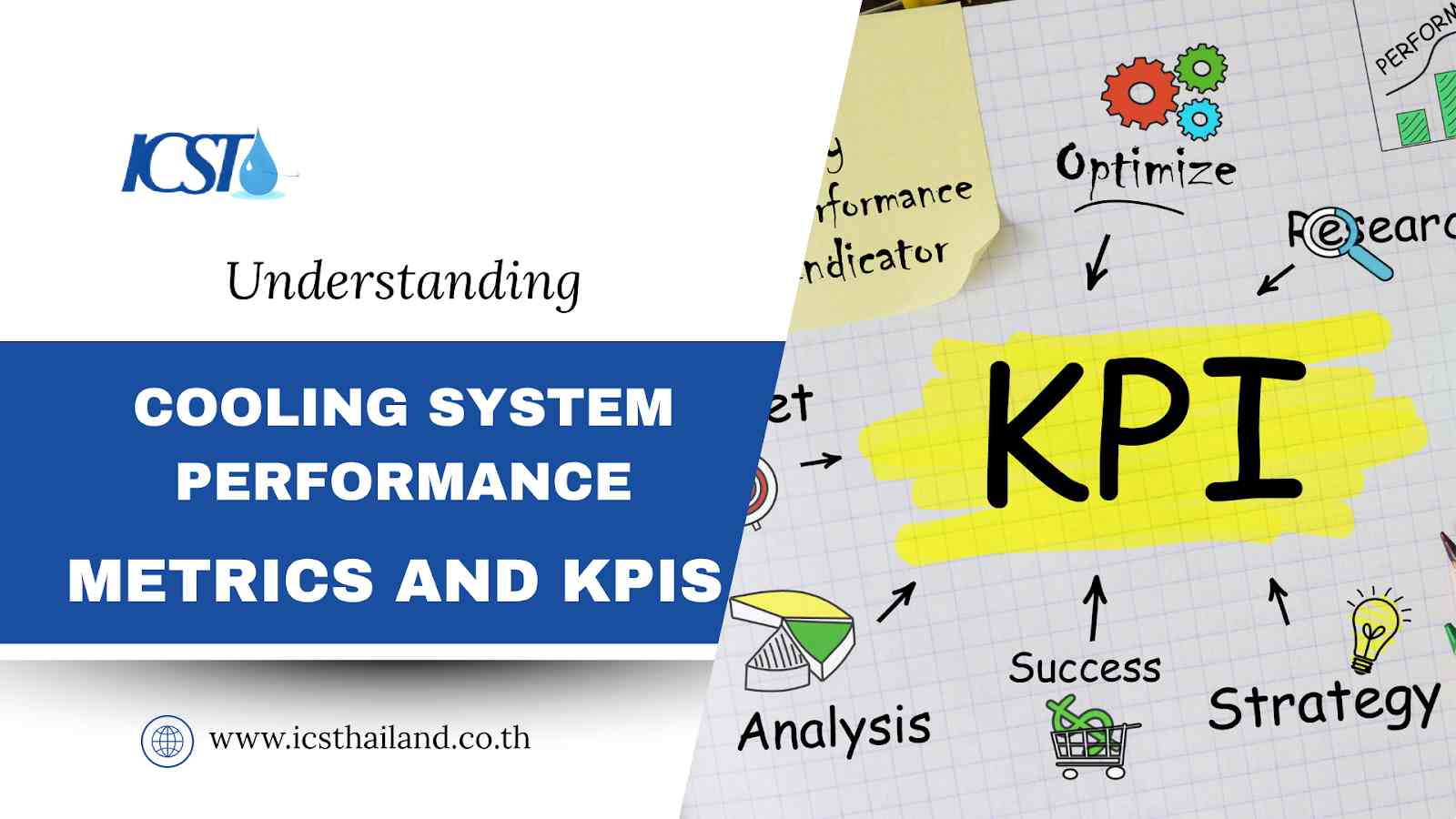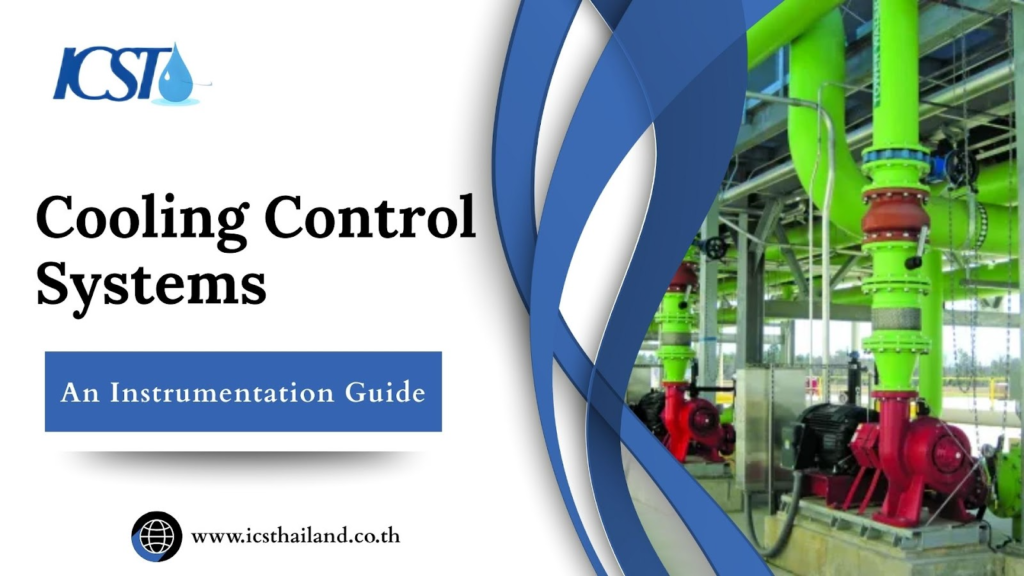Is your cooling system draining more money than necessary? For industrial facilities, this question strikes at the heart of operational efficiency. While production equipment often takes center stage, cooling systems quietly determine whether your operations run smoothly or grind to a costly halt. Without reliable cooling, manufacturing processes become unstable, data centers overheat, and production schedules collapse.
Yet here lies the challenge: despite their critical importance, cooling system performance often remains poorly understood in quantifiable terms. Many facility managers monitor basic temperature readings but miss the deeper performance indicators that reveal optimization opportunities and predict potential failures.
This post will demystify key cooling system performance metrics and KPIs, empowering you to effectively monitor, optimize, and enhance your industrial cooling infrastructure for peak efficiency and cost savings. Understanding these measurements transforms reactive maintenance into proactive optimization.
Table of Contents
ToggleCore Cooling System Performance Metrics
Energy Efficiency Ratio (EER)
The Energy Efficiency Ratio (EER) is a key metric for measuring how effectively a cooling system converts energy into cooling output. Expressed in BTU per watt-hour (BTU/hr per watt), EER highlights a system’s energy efficiency under specific conditions.
When selecting HVAC systems or air conditioning units, prioritize models with a high EER to reduce energy consumption and operational expenses over time.
Key Considerations for EER:
- EER is measured at a fixed temperature, making it less reflective of seasonal variations.
- Ideal for evaluating cooling systems in consistent climates or controlled environments.
- Many regulatory agencies set minimum EER standards for energy-efficient systems.
Seasonal Energy Efficiency Ratio (SEER)
The Seasonal Energy Efficiency Ratio (SEER) expands on EER by accounting for a system’s performance over an entire cooling season.
SEER is particularly relevant for residential and commercial air conditioning systems in regions with diverse seasonal climates.
Why SEER Matters:
- Higher SEER ratings result in lower energy bills and a reduced environmental footprint.
- High-SEER modern systems often come equipped with advanced features such as variable-speed compressors to improve efficiency.
- Energy Star-certified cooling systems usually meet or exceed specific SEER thresholds, making them a reliable choice.
Coefficient of Performance (COP)
The COP measures the effectiveness of heat pumps and industrial chillers by comparing the amount of thermal energy produced to the energy used. Unlike EER or SEER, COP applies to both heating and cooling systems, making it a versatile metric for evaluating year-round performance.
kW per Ton of Cooling
This metric measures the energy consumption of chillers, expressed as kilowatts per ton of cooling capacity. It provides a straightforward way to assess the operational efficiency of large-scale cooling systems.
Lower kW per ton values indicate superior energy efficiency, making this metric crucial for industrial and commercial applications.
Practical Insights:
- Energy-efficient chillers typically consume between 0.5 and 0.6 kW per ton when operating under ideal conditions.
- Regular maintenance, such as cleaning coils and calibrating controls, can lower kW per ton values.
- Consider hybrid chiller systems that utilize free cooling during colder months to further reduce energy consumption.
Thermal Performance Indicators
Maintaining precise temperature control is paramount for both operational efficiency and equipment longevity in industrial cooling. These metrics help you monitor and ensure consistent thermal management throughout your system.
- Supply and Return Temperatures (ΔT): This crucial metric tracks the temperature differential across key components like cooling towers, chillers, and distribution systems. Monitoring ΔT helps assess heat transfer efficiency. Optimal ΔT values vary by system type but typically range from 10-20°F (5.5-11°C). Significant deviations can indicate issues such as insufficient flow, heat exchanger fouling, or incorrect setpoints.
- Process Temperature Stability: For sensitive industrial processes (e.g., in food processing, pharmaceuticals, or data centers), consistent temperatures are critical for product quality and equipment reliability. This metric tracks how consistently your systems maintain target temperatures. Excessive fluctuations signal system instability, potentially leading to product defects or equipment damage.
- Hot Spot Identification: Especially vital in data centers or facilities with high-heat-density equipment, hot spot identification involves using thermal imaging and strategically placed sensors to pinpoint areas of inadequate cooling. Early detection of hot spots prevents localized overheating, which can cause equipment failure and unplanned downtime.
- Return Temperature Index (RTI) / Supply/Return Heat Index (SHI/RHI): These are advanced metrics that evaluate the effectiveness of your thermal management system by comparing actual return temperatures to design specifications or ideal values. A favorable RTI/SHI/RHI indicates efficient heat capture and removal from the cooled environment, ensuring that the cooling system is performing optimally relative to the heat load.
Power Usage Effectiveness (PUE)
Power Usage Effectiveness (PUE) serves as an essential measure for assessing the energy efficiency of data centers. It compares the total facility’s energy use to the energy consumed by IT equipment, helping to identify inefficiencies in supporting systems like cooling.
A PUE value closer to 1.0 indicates an efficient facility where most energy supports IT equipment rather than ancillary systems.
Steps to Improve PUE:
- Upgrade to high-efficiency cooling systems such as liquid cooling or evaporative cooling.
- Coolant Flow Rate: Proper flow rates ensure effective heat transfer. Monitor flow rates against design specifications to identify pump degradation or blockages.
- Pump Efficiency: Track pump performance through flow rate versus power consumption ratios to optimize energy usage.
- Implement hot aisle/cold aisle containment to optimize airflow.
KPIs for Operational Excellence
Specific Energy Ratio (SER)
Specific Energy Ratio (SER) measures the energy consumed relative to production output, typically expressed as kWh per ton of product cooled or produced.
This metric is crucial for industries reliant on consistent cooling, such as food processing, pharmaceuticals, and chemical manufacturing.
How to Optimize SER:
- Use advanced controls and automation to align energy use with production demands.
- Conduct energy audits to pinpoint inefficiencies in your cooling system.
- Retrofit older systems with energy-efficient components to reduce overall consumption.
Maintenance & Reliability KPIs
By understanding and optimizing these metrics, you can make more informed decisions about your cooling systems, reduce energy costs, and contribute to a more sustainable future.
Preventive maintenance directly impacts cooling system efficiency and longevity. How can you measure maintenance effectiveness?
- Cooling System Maintenance Frequency: Track adherence to scheduled maintenance intervals.
- Maintenance Cost per Ton: Calculate maintenance spending relative to cooling capacity. This KPI helps optimize maintenance budgets and identify cost-effective service strategies.
- Mean Time Between Failures (MTBF): Higher MTBF values indicate reliable equipment and effective maintenance programs.
- Mean Time to Repair (MTTR): Track how quickly systems return to operation after failures.
Operational Stability & Quality KPIs
System reliability determines production consistency and operational costs. Which stability metrics should you monitor closely?
- Downtime Due to Cooling Issues: Quantify unscheduled downtime caused by cooling system failures.
- Deviation from Setpoint Temperature: Measure how consistently systems maintain target temperatures.
- Noise Levels: Track acoustic performance, particularly important for facilities with noise restrictions or worker comfort requirements.
Implementing & Leveraging Metrics: Turning Data into Action
Data Collection Methods
Effective monitoring requires comprehensive data collection systems. Modern technology offers several approaches to gathering performance data.
Install sensors and IoT devices for real-time monitoring of temperature, pressure, flow rates, and energy consumption. These systems provide continuous data streams and instant alerts for abnormal conditions.
Implement automated Building Management Systems (BMS) or SCADA systems to centralize data collection and control. These platforms integrate multiple sensors and provide historical data analysis capabilities.
Supplement automated systems with manual logging and inspections. Regular visual inspections can identify issues that sensors might miss, such as fouling, corrosion, or mechanical wear.
Analysis and Benchmarking
Raw data becomes valuable only through proper analysis and comparison. Establish performance baselines by comparing current metrics against historical data, industry benchmarks, and original design specifications.
Identify trends that indicate gradual performance degradation or emerging issues. Seasonal variations, efficiency declines, or increasing maintenance frequency can signal the need for intervention.
Use statistical analysis to separate normal operational variations from genuine performance problems. This approach reduces false alarms while ensuring real issues receive attention.
Strategic Decision Making
Transform performance data into actionable business decisions. Use efficiency metrics to justify equipment upgrades, replacements, or capacity expansions. ROI calculations based on energy savings and reduced downtime often support investment decisions.
Optimize Operational Settings
- Use performance data to adjust setpoints, pump speeds, and control sequences.
- Focus on maximizing efficiency while ensuring all process requirements are met.
Implement Predictive Maintenance
- Create maintenance schedules based on trend analysis and reliability metrics.
- Reduce unexpected failures and minimize maintenance costs with this proactive approach.
Collaborate with Experts
- Work with cooling system professionals who can interpret operational metrics specific to your system.
- Leverage expert analysis to uncover optimization opportunities that internal teams might miss.
Conclusion
Mastering Cooling System Performance Metrics is the key to achieving operational excellence. The real benefits come when you actively track these metrics, analyze trends, and address potential issues before they disrupt production.
Regular performance monitoring enables proactive maintenance, reduces energy costs, and extends equipment life. These benefits compound over time, creating significant competitive advantages through improved operational reliability and reduced total cost of ownership.
Ready to gain deeper insights into your cooling system’s performance? Contact ICS Thailand today for an expert consultation on optimizing your industrial cooling solutions, tailored to your unique operational requirements and performance goals.
Frequently Asked Questions
How often should I monitor these cooling KPIs?
For critical systems, real-time continuous monitoring via sensors and a Building Management System (BMS) is ideal. For less critical areas, daily or weekly checks might suffice.
What’s the first step to improving my cooling system’s efficiency?
Start by establishing a baseline. Collect current data for key metrics like energy consumption (kW/ton), ΔT, and process temperatures. An energy audit can then pinpoint the most significant areas for improvement.
What’s the difference between EER, SEER, and COP?
EER: Efficiency at a fixed temperature (e.g., specific climate).
SEER: Efficiency over an entire cooling season (varying temperatures).
COP: A flexible measure for heating and cooling, comparing thermal energy output to energy input
How can I improve my data center’s Power Usage Effectiveness?
- Optimize cooling systems (e.g., liquid cooling, economizers).
- Implement hot/cold aisle containment.
- Upgrade to more efficient IT equipment.
- Regularly monitor real-time energy data.
What are key maintenance KPIs for cooling systems?
- Mean Time Between Failures (MTBF): System reliability.
- Mean Time To Repair (MTTR): Downtime reduction.
- Maintenance Frequency & Cost per Ton: Assess program effectiveness and cost-efficiency.
How do I identify “hot spots” in cooling infrastructure?
Use thermal imaging cameras and strategically placed temperature sensors in critical zones. Early detection of hot spots prevents localized overheating and potential equipment damage








